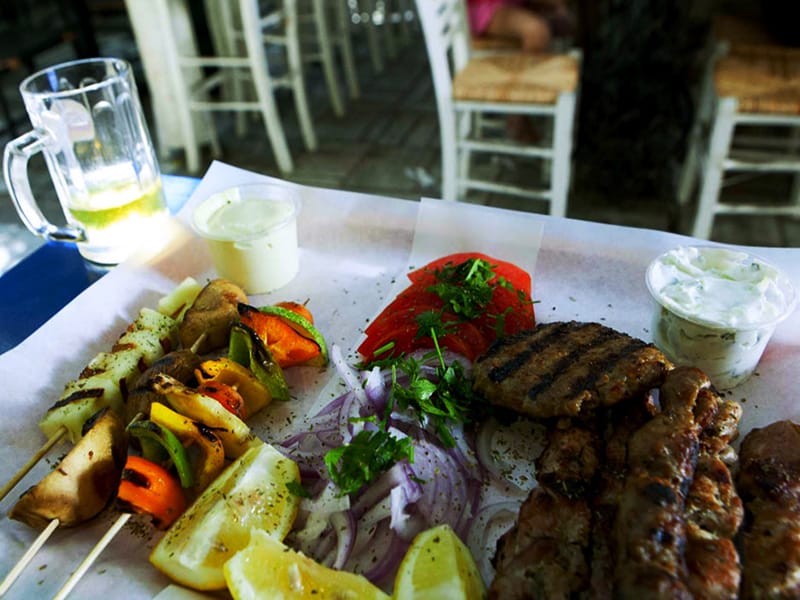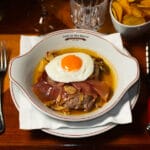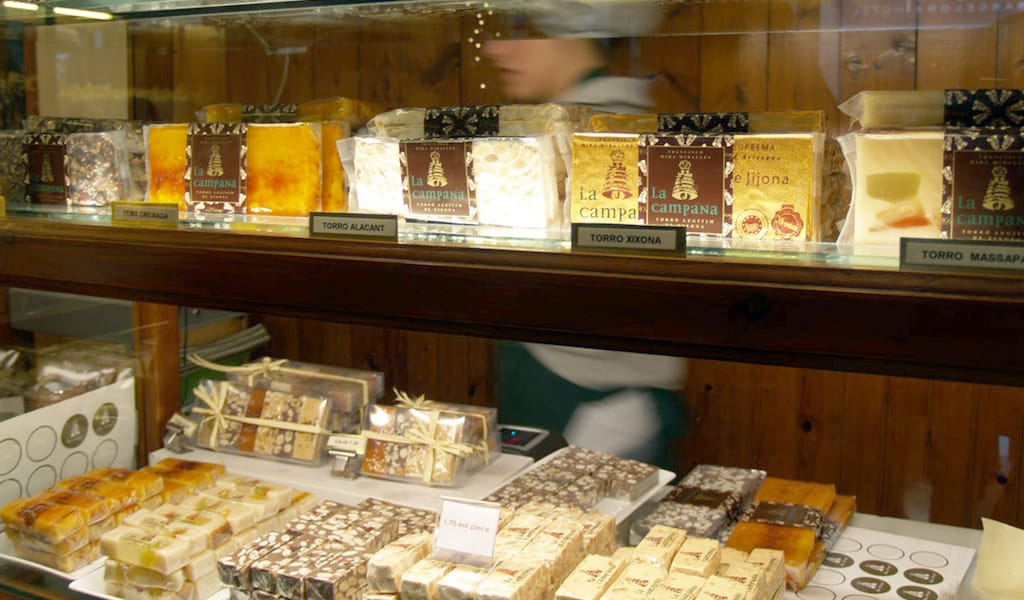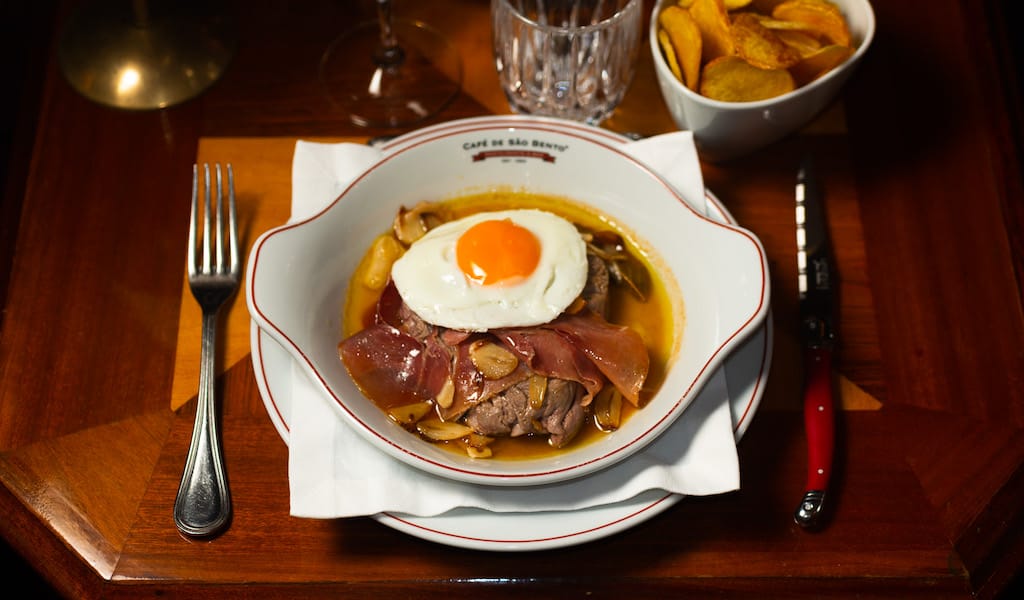In the ’90s, as the first American burger and pizza chains began appearing all over Athens, it looked like the humble souvlaki was not the takeaway or delivery option of choice anymore. Luckily, the past 10 years have seen a huge comeback of souvlaki. Neo-souvlaki places that looked nothing like the greasy joints of the past started appearing all over Athens. The economic crisis has made the return of souvlaki even more poignant: people want cheap, tasty food more than ever, and souvlaki shops are opening up everywhere.
However, souvlaki is not as straightforward as it seems. There is not just one souvlaki but many types of souvlaki. In Athens, souvlaki can involve anything from pieces of meat on a wooden skewer to gyros served with potatoes, tomato, onion and tzatziki and wrapped in pita.
Our first rule for eating souvlaki in Athens is to avoid the famous souvlaki strip towards the end of Mitropoleos Street in Plaka – the first place, in fact, that most visitors to Athens are directed to when they ask for souvlaki. The area is packed with tourists 24/7 and is full of touts trying to grab people’s attention with menus and slimy “Hello, madame” greetings. The souvlaki places there (including several that are celebrated in most tourist guides) take advantage of many an unsuspecting tourist with a common scam, bringing a large plate of pieces of pork on skewers with a side of French fries – and then charging for the price of a full meal – when customers think they are just ordering a sandwich.
Instead, we recommend eating at classic, old-school souvlaki restaurants scattered around downtown Athens that serve the real deal.
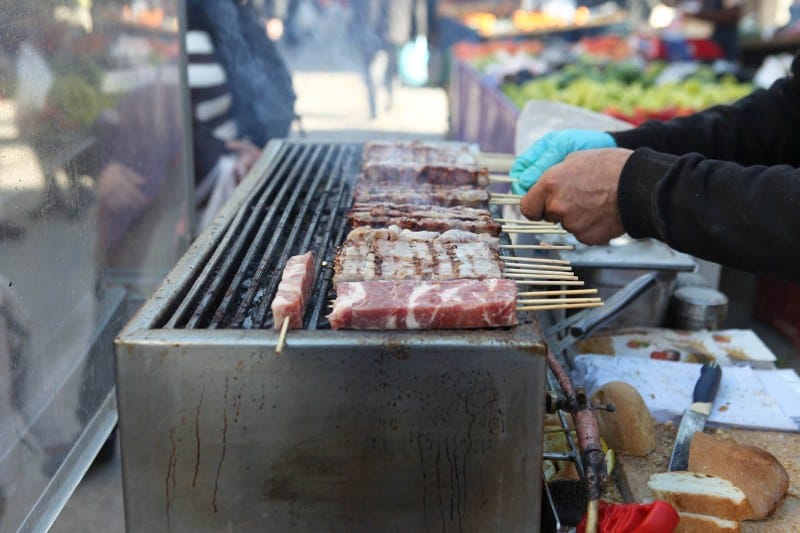
Basic Notes:
The information in this souvlaki guide is for Athens but it should hold true anywhere in Southern Greece. (However, in Northern Greece – roughly meaning the city of Thessaloniki and the surrounding regions of Macedonia and Thrace – there is a whole other array of names and terms for souvlaki and its different forms.) The first thing to remember is that when people say souvlaki, unless they specify otherwise, they mean pork – something to bear in mind if you don’t eat pork. Don’t worry; most souvlaki places now do chicken as well, so there is an alternative. There are usually certain standard extras – generally fries, tomato, onion and tzatziki – along with the pita and meat; sometimes lettuce or parsley is also added. Other places serve their souvlaki with a spicy red sauce, or with yogurt instead of tzatziki. Generally you can pick and choose what you like.
Athenian Souvlaki Glossary:
Pita – In Greece, pita bread has a thick, chewy texture. Unlike the thinner, lighter pita used in Middle Eastern countries, Greek pita is quite substantial and filling.
Kalamaki – This is essentially pieces of meat – chicken (kotopoulo) or pork (hirino) – on a wooden skewer, usually served with a little bread on the side.
Souvlaki pita – This means pieces of meat (either pork or chicken) served with onion, tzatziki, tomato and fries and wrapped in pita.
Gyros pita – Gyros is meat shaved from a vertical spit, akin to Turkish döner kebap, the name by which it is more commonly known in Europe. Unlike in the U.S., where gyro meat tends to be dry and is usually a combination of beef and lamb, in Athens, gyros is made with especially succulent pieces of pork. Tzatziki, fries, tomato and onion are added to the shaved meat before is it wrapped in pita.
Gyros kotopoulo pita – Chicken gyros is a blessing to those who dislike or don’t eat pork. It usually comes wrapped in pita with onion, tomato and fries. Sometimes a white mayonnaise-based sauce is used instead of tzatziki.
Gyros portion – This is a big portion of gyro meat, usually served at sit-down establishments. The plate is lined with pita and a large portion of the meat is laid on top with some tomato, tzatziki and onion on the side. The whole point is that the dish is meat-heavy: you eat about three times the amount of meat that you would consume in a gyros pita.
Kebab – In Athens, the term kebab refers to oblong meat patties made from meat, which are grilled – sometimes on skewers and sometimes not – and usually served with tomato and onion, as well as pita. The meat is generally made with a mixture of veal and minced lamb, although some places also put minced pork in the mix to make the kebab even more succulent. Kebab is not served at all souvlaki places in Athens.
Published on November 09, 2012
Related stories
December 12, 2022
BarcelonaTypically eaten at Christmastime in Spain, turrón (a type of nougat) originated centuries ago. Some historians believe it was a sweet paste with nuts eaten by athletes in ancient Rome, while others trace its origins to a more elaborate medieval Arab delicacy that combined various toasted nuts with spices and honey. First documented in Spanish by an…
June 4, 2018
Barcelona“I still don’t know where the siphon bottles for the vermut are,” says an employee of Marina, a small bar in the newly renovated Mercat de Sant Antoni. It’s clear as we’re walking around that the staff of the market’s few bars and its many vendors are still settling in and adapting to their brand…
March 31, 2023
LisbonIn most countries around the world, it’s safe to say that steak is a minimalist affair – a dish that, in some cases, combines perhaps no more than beef and salt. In Portugal, however, people tend to go in the other direction. “It’s a steak that’s pan-fried, and served with smoked ham, bay leaf, garlic…







































